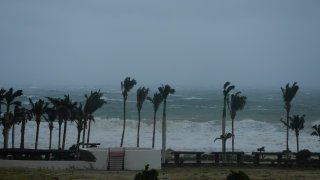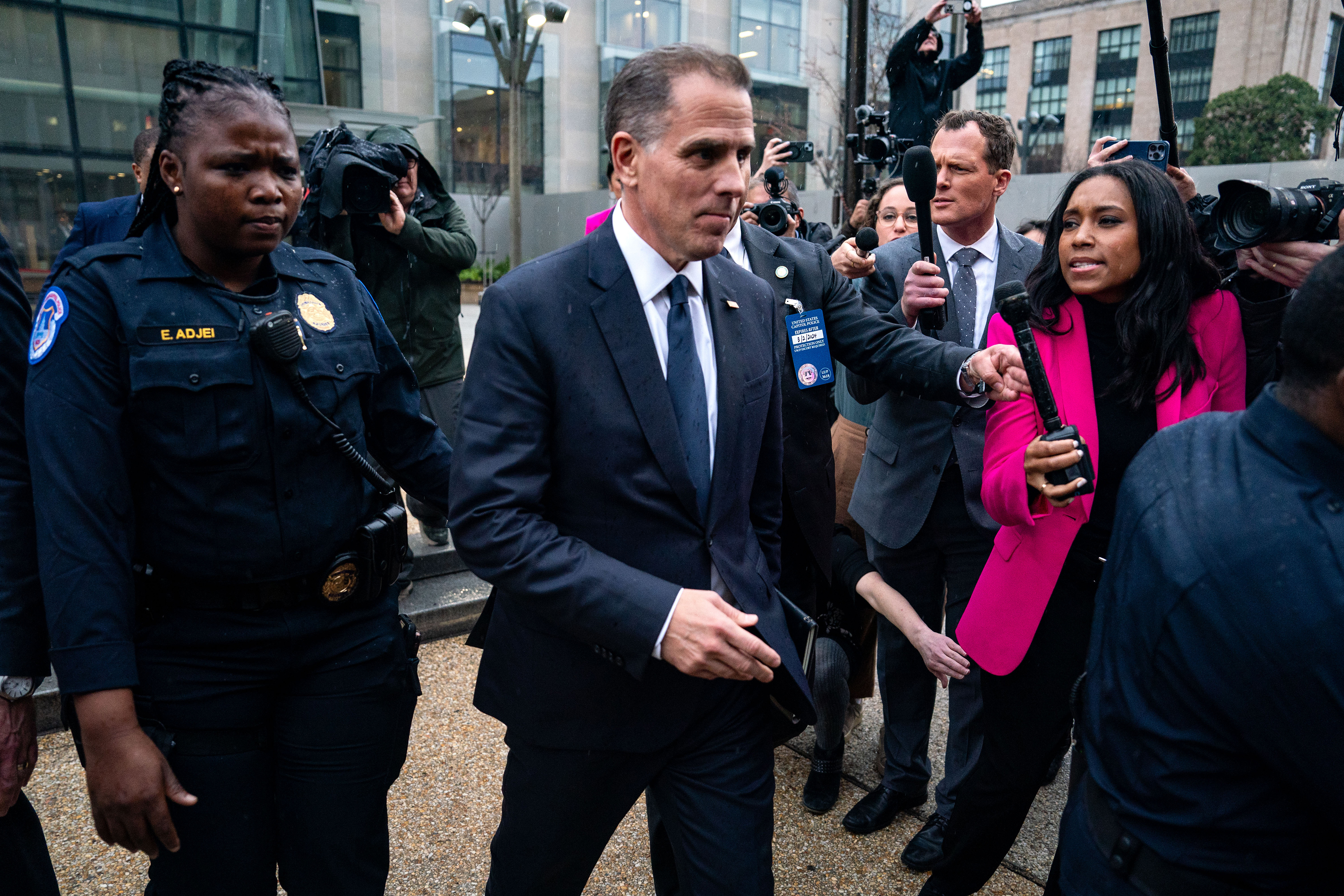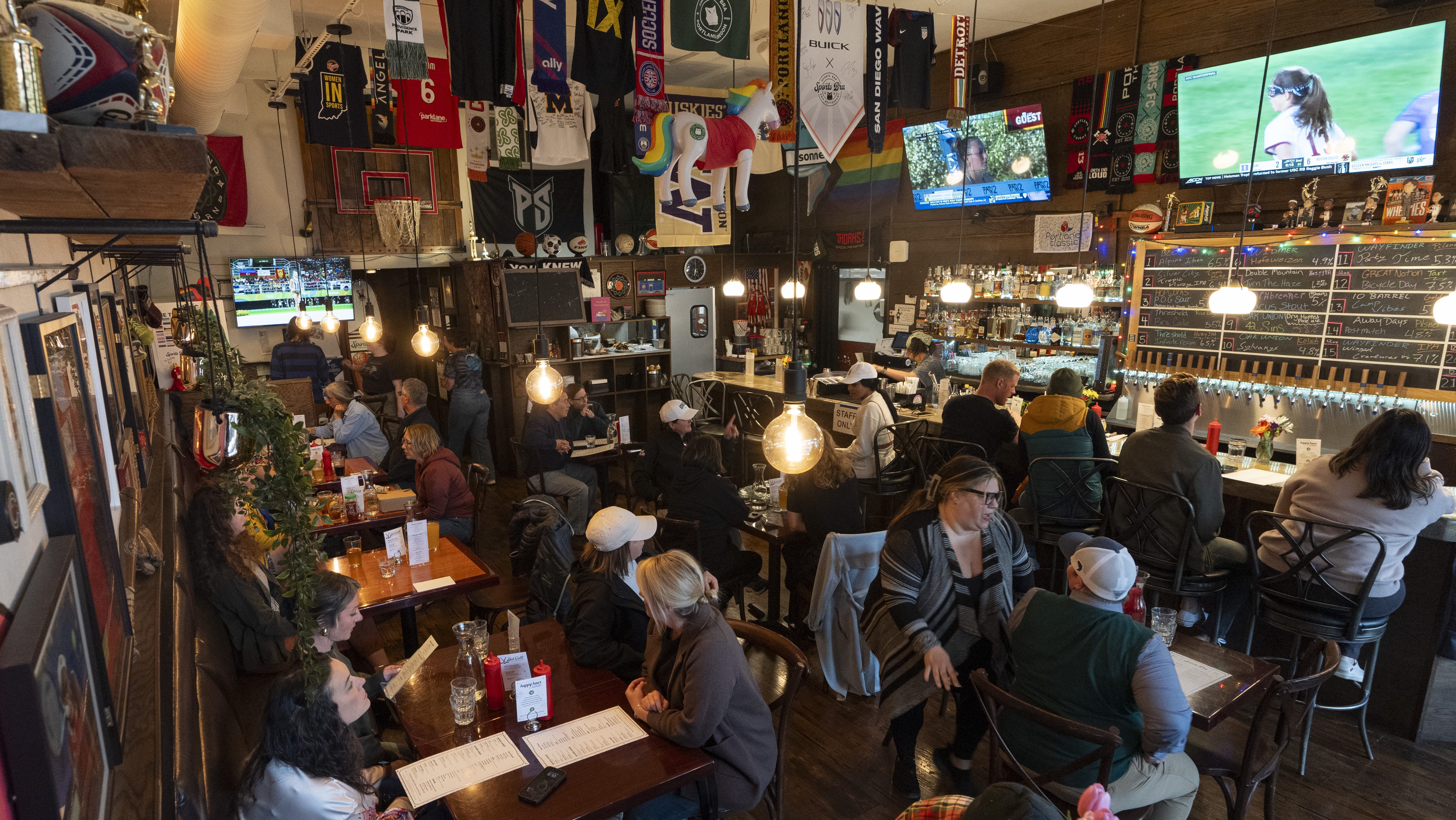
Hurricane Norma came ashore near the resorts of Los Cabos at the southern tip of Mexico’s Baja California Peninsula on Saturday afternoon, and hours later Hurricane Tammy made landfall on the Caribbean island of Barbuda.
Both storms were Category 1 hurricanes when they hit.
The U.S. National Hurricane Center said Norma, once a Category 4 hurricane, moved ashore with winds of 80 mph (130 kph) near el Pozo de Cota, west-northwest of Cabo San Lucas.
Norma later weakened to a tropical storm with 70 mph (110 kmh) winds as it crossed the Baja California Peninsula toward the Sea of Cortez, also known as the Gulf of California.
Get San Diego local news, weather forecasts, sports and lifestyle stories to your inbox. Sign up for NBC San Diego newsletters.
Businesses in Cabo San Lucas had nailed plywood over their windows, and government personnel hung banners warning people not to try to cross gullies and stream beds after Norma regained strength and again became a major storm Friday.
By late Saturday afternoon, Norma was centered about 30 miles (45 kilometers) north-northeast of Cabo San Lucas, the National Hurricane Center said. It was moving north-northeast at 6 mph (9 kmh), but was expected to take a harder turn toward the east Sunday.
President Andrés Manuel López Obrador said via the platform X on Saturday night that there had so far been no reported loss of life from the storm. “Hurricane Norma already passed Los Cabos and there are only torrential rains in La Paz, but without loss of life.”
U.S. & World
In Cabo San Lucas, curious tourists began to pick their way along debris-strewn beaches after the storm passed.
Its languid pace raised the possibility of severe flooding. Norma was expected to dump six to 12 inches of rain, with a maximum of 18 inches in places across southern Baja California and much of Sinaloa state.
John Cangialosi, a senior specialist at the National Hurricane Center, said the area is vulnerable to rain because it is a dry region generally.
"Six to 12 inches of rain is what is generally forecast, but there could be pockets of up to 18 inches of rain and we do think that will be the most significant impact that could result in flash and urban flooding and mudslides,” he said.
Baja California Sur Gov. Victor Castro said via the platform X that “because it's moving slowly, greater damages are anticipated.”
But little damage was initially reported. Some trees and power poles were down, but there were no reports of injuries.
Authorities in San Jose del Cabo said 24 shelters housed about 1,700 people.
The Los Cabos Civil Defense agency had urged residents to stay indoors all day as emergency workers evacuated people from low-lying areas and took them to shelters.
Police in San Jose del Cabo rescued two people from their truck when a surging stream swept it away early Saturday. Some informal settlements, away from the hotels that serve tourists, were isolated by rising water. Some neighborhoods lost electricity and internet service.
The federal government posted 500 marines to the resort to help with storm preparations.
By late morning, the area's streets were littered with palm fronds and other debris, and essentially deserted except for occasional military patrols. Strong winds whipped traffic signs, trees and power lines.
Hotels in Los Cabos, which are largely frequented by foreign tourists, remained about three-quarters full and visitors made no major moves to leave en masse, officials said. The local hotel association estimated about 30,000 tourists were in Cabo San Lucas and San Jose del Cabo on Friday.
Airports were closed. San Jose del Cabo airport director Francisco Villaseñor said he expected flights to resume by midday Sunday.
The U.S. National Hurricane Center said Tammy came ashore Saturday night with 85 mph (140 kmh) winds. The hurricane was moving north-northwest at 10 mph (17 kmh) and was centered 35 miles (55 kilometers) north of Antigua.
Hurricane warnings were in effect for the islands of Antigua, Barbuda, Anguilla, St. Martin and St. Barthelmy.
The hurricane center said that “heavy rainfall and flooding (are) likely over much of the Lesser Antilles.”
Tammy hit two weeks after Tropical Storm Phillippe swept by Antigua and Barbuda dumping six to eight inches of rain and plunging both islands into darkness. The slow-moving system was forecast to bring up to 12 inches over a twin island nation, where the devastation of Hurricane Irma in 2017 and Philippe's recent wind damage and flooding were still fresh memories.
“This means therefore, that the earth is still somewhat saturated and with additional rainfall, the potential for flooding is elevated,” Prime Minister Gaston Browne said in a nationwide broadcast Friday. He urged residents to take all necessary steps to secure life and property.
Government offices, banks and most non-retail businesses closed early on Friday to allow staff to prepare. Residents’ rushed to stock up on necessities, causing gridlock throughout St John’s and near popular shopping centers and supermarkets.
Local disaster management officials announced plans to open about 40 shelters in communities throughout the country.
___
Associated Press writer Anika Kentish in St. John's, Antigua, contributed to this report.



